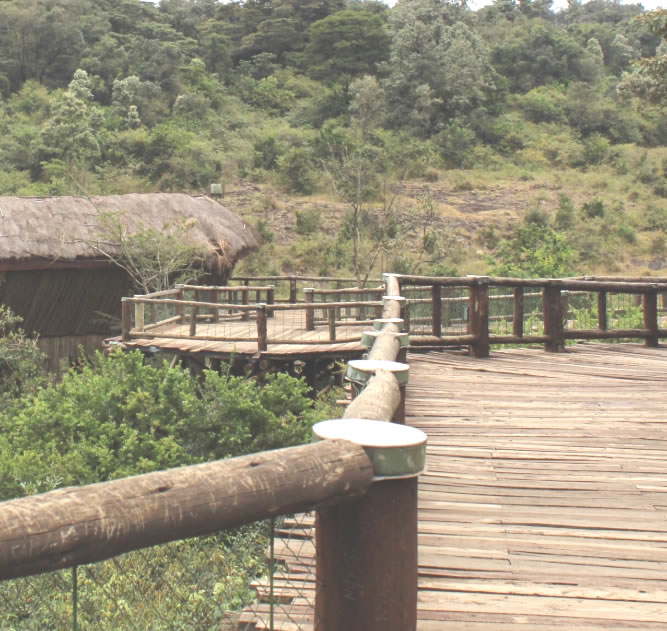
| Days | Day Trip |
|---|---|
| Highlights | Sightseeing Tours, Adventure Tours |
| Transport | Jeep afari / Van |
The Nairobi Safari Walk is a wonderful and immersive wildlife experience located within Nairobi National Park. Operated by Kenya Wildlife Services (KWS), the Safari Walk offers visitors a chance to see a variety of animals and learn about Kenya’s rich biodiversity in a beautifully landscaped setting. It’s an ideal excursion for those looking to get a closer look at Kenya’s wildlife without leaving Nairobi city.
As your safari begins, you’re welcomed by the fresh morning air, the sounds of birds and distant wildlife, and the sight of a vast African landscape stretching before you.
Only 7km south of the city of Nairobi lies the Nairobi Safari Walk, Kenya’s new conservation based recreation facility. The combination of skilled and creative landscape design, unique wildlife Walk is the eye opener to Kenya’s Parks and Reserves. It offers you an opportunity to learn what you expect species and detailed interpretation, renders the facility supremacy in tourism and conservation education. The Safari to see across the country. Introductory talks on Kenya’s Parks and Reserves can be arranged for you by the naturalists. You will have a taste of Kenya’s rich Animal collection including the rare bongo antelope, White Rhino, Albino Zebra, a collection of cats, antelopes and primates. NSW is also home to a collection of about 150 species of local trees. Get to learn their varied traditional uses too.
Nairobi Safari Walk is a conservation based recreation facility. The combination of skilled and creative landscape design, unique wildlife species and detailed interpretation, renders the facility supremacy in tourism and conservation education. It is an eye opener to Kenya’s Parks and Reserves. It offers you an opportunity to learn what you expect to see across the country. You will have a taste of Kenya’s rich Animal collection including the rare bongo, white rhino, albino zebra, and a collection of cats, antelopes and primates. It is also home to a collection of about 150 species of local trees.
PRICE INCLUDES
Transport in a Mini Van with open roof and window seat guaranteed
Transfers, sightseeing, roundtrip and visits as per tour programme
1 liter mineral water per person/day
Entrance fees
Qualified English-speaking local tour guide/driver
PRICE DO NOT INCLUDE
International flight.
Visa for Kenya (about USD 50)
Beverages
Tips
-Nairobi City
June to October and January and February
June to October and December to March
April and May
June to October
March, April and May (Peak of the Wet season)
GROUP OR PRIVATE, 4×4 JEEP SAFARI Ziwa safari Safaris Tour features Days 7 Days 6 Nights Highlights Sightseeing Tours, Adventure Tours, Safari Tours…
GROUP OR PRIVATE, 4×4 JEEP SAFARI Bush to Island Safari Tanzania & Zanzibar Tour features Days 13 Days 12 Nights Highlights Sightseeing Tours,…
GROUP OR PRIVATE, 4×4 JEEP SAFARI Bush to Island Safari Tour features Days 13 Days 2 Nights Highlights Sightseeing Tours, Adventure Tours, Safari…
Trustindex verifies that the original source of the review is Google. Trustindex verifies that the original source of the review is Google. Trustindex verifies that the original source of the review is Google. Trustindex verifies that the original source of the review is Google. Trustindex verifies that the original source of the review is Google. Trustindex verifies that the original source of the review is Google. Trustindex verifies that the original source of the review is Google. Trustindex verifies that the original source of the review is Google. Trustindex verifies that the original source of the review is Google. Trustindex verifies that the original source of the review is Google.
Best Memory Safaris operates on excursions and safaris in East Africa. we also offer tailor made tour programs which specially fit your travel plan, including Mountain trekking,walking safaris and Social project visits. Our Kenyan office is located on the South Coast of Mombasa at Diani Beach and managed by a Team of seasoned professionals. We pride over 15 years experience and international class exposure in safari business.
No WhatsApp Number Found!
WhatsApp us